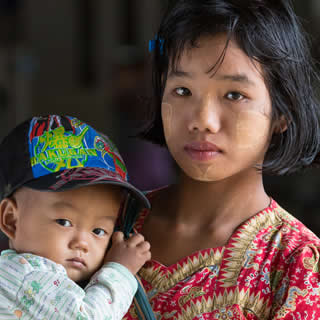 Every girl should have the opportunity to choose her future. All too often though, early and unintended pregnancies alter the course of a girl’s life.
Every girl should have the opportunity to choose her future. All too often though, early and unintended pregnancies alter the course of a girl’s life.
In many communities, girls are forced to marry young, without access to voluntary family planning services. This means they often have children as children themselves. They’re unable to go to school and are at a high risk of medical complications from pregnancy.
Today, the United Nations Population Fund (UNFPA) launched the State of World Population Report 2013 to look at the unique challenges and potential solutions to adolescent pregnancy.
Here are 5 important facts to know from this year’s report. Click the links below to share these facts on Twitter:
Every day, 20,000 girls below age 18 give birth in developing countries.
95 percent of adolescent births occur in developing countries.
Child marriage is strongly associated with early pregnancy. An estimated 39,000 girls under the age of 18 are married every day, and 9 out of 10 girls who give birth between ages 15 to 19 are married – many of them against their will.
Here are 5 steps the report proposes to address adolescent pregnancy:
Gather more data on girls ages 10 to 14. This data would help to identify those at greatest risk of school dropout, child marriage, and early pregnancy and to design age-appropriate sexual and reproductive health education.
Increase age-appropriate, gender-sensitive sexuality education. Education continues to be the single most important predictor of age at marriage over time.
Provide youth-friendly health services with a full range of modern contraceptive methods.
Engage men and boys to help rectify gender inequities. Programs that combine outreach with group education are the most effective at changing behavior.
Make sure all of the above steps are priorities in the global agenda. Millennium Development Goal 5b – which calls for universal access to reproductive health – has seen the least amount of progress of the MDGs. The steps listed here need to be included in the development agenda, now and in the future, to perpetuate progress.
Expanding access to voluntary family planning, ending the harmful practice of child marriage, and providing the other services and programs mentioned here can help adolescent girls to reach their full potential, break the cycle of poverty, and reach our development goals.
For more information on reproductive health and family planning, follow @UnivAccessProj on Twitter.



 View All Blog Posts
View All Blog Posts